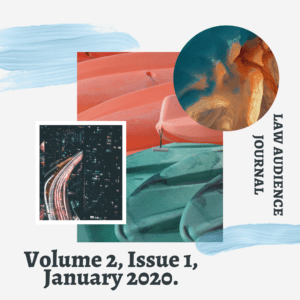AUTHORED BY: MR. PRANAV TRIKHA (BBA. LL.B), NEW LAW COLLEGE, BHARATI VIDYAPEETH (DEEMED TO BE UNIVERSITY), PUNE.
I. INTRODUCTION:
Not long ago, the Union Cabinet approved the Assisted Reproductive Technology Regulation Bill, 2020 and, which follows Surrogacy Regulation Bill, 2020 and Medical Termination Pregnancy Amendment Bill, 2020, which compliment the older Pre-Conception and Pre-Natal Diagnostic Techniques Act, 1994. Collectively, all these new legislations not only aim to protect reproductive rights and choices of women in India but also to ensure that the infertile couples, who wish to avail these facilities are not misguided or exploited.
In Indian States prevalence of infertility varies from State to State such as 3.7 per cent in Uttar Pradesh, Himachal Pradesh and Maharashtra, to 5 per cent in Andhra Pradesh, and 15 per cent in Kashmir and prevalence varies in the same region across tribes and caste.[1] This failure to reproduce and start a family has led to both psychological and emotional disturbance not only in the balance of the relationship between couples but also in society.
II. WHAT IS ASSISTED REPRODUCTIVE TECHNOLOGY?
In order to address this issue of infertility, the couples shifted from traditional ways of reproduction and conceiving to a newer and successful way to achieve fertility, i.e., Assisted Reproductive Technology (ART). This technique has been gaining popularity in recent times in India to treat infertility. It involves dealing with both a woman’s egg and a man’s sperm. There is a wide range of procedures that come under ART which includes, inter alia, in vitro fertilization (IVF) technique, intra-uterine insemination (IUI), intracytoplasmic sperm injection (ICSI), surrogacy etc.
Basically, ART involves all those processes and procedures that aim to achieve fertility and reproduce with the help of external assistance. The objective is to deal with multiple kinds of reproductive issues and produce a healthy baby. IVF is most common and successful among these techniques, which involves removal of an egg from a woman’s body and fertilizing it with a man’s sperm in a test-tube in a laboratory and later on, the embryo is carefully placed back in the woman’s body.
III. THE EMERGENCE OF ART REGULATION BILL, 2020:
Now for a long time, the concept of ART has been gaining popularity amongst the couples who fail to reproduce naturally in India but it lacks proper legislation to govern and check these processes and the institutions conducting them but as mentioned above, recently there have been developments in this area. In 2020, first, the Union Cabinet approved the Surrogacy (Regulation) Bill, 2020 after making certain changes based upon the Rajya Sabha’s recommendation. This was followed by the Medical Termination Pregnancy Amendment Bill, 2020 which amends the Medical Termination of Pregnancy Act, 1971.
Assisted Reproductive Technology Regulation Bill, 2020 aims at providing a national framework for the regulation and supervision upon the usage of assisted reproductive technology and matters connected or incidental to it. Further, the bill provides for the maintenance of a central database through the establishment of a National Registry and Registration Authority with an objective to check all ART banks and clinics. The bill first came up in the year 2008 but was subjected to several changes and corrections, then finally in the year 2020 the bill was approved by the Union Cabinet.
The field of assisted reproduction has developed very rapidly since the birth of first test-tube baby in Kolkata, India, which was world’s second IVF baby; although certain guidelines regarding ART banks and clinics were issued by Indian Council of Medical Research titled- ‘National Guidelines for Accreditation, Supervision and Regulation of ART Clinics in India’ but these guidelines fail at many levels.[2] The ART Regulation Bill, 2020 is expected not only to cover and deal with all the shortcomings of the aforesaid guidelines but also to open new perspectives towards the protection of the interests of various groups of society.
IV. PROSPECTS AND NEED OF ART REGULATION BILL IN INDIA:
In India, the problems like infertility and childlessness are not just a personal problem of a couple or a family but it also has some social stigma attached to it, which is difficult to deal with. There are various other areas in relation to ART that require a standardized code or legislation to check its conduct and management throughout the country. These problems include many issues at the societal and national level like exploitation of couples who tend to avail these facilities, malpractices at ART banks and clinics, lack of a proper governing or regulatory board to check their functioning and management, sex selection and sale of human embryos. Furthermore, usage of such techniques affect women not only at a physical level but also at an emotional and a psychological level, therefore their interests and rights should be protected.
The ART Regulation Bill, 2020, aims to combat the problem of infertility in India and give a proper systemized structure and shape to the scattered manner in which ART banks and clinics run across the country. These aims can be broadly classified under three heads viz; regulate ART service provider, protect the rights of women and prevent the exploitation of the couples opting for ART to deal with infertility. Every institution, organization or body functioning in the territory of India has a governing authority to keep a check upon them, but that’s not the case with ART. Governance and regulation are necessary for the successful running of any country. The bill aims at the establishment of the National Board and various State Boards to cater to this need.
If there is a need to check these ART service providers, there is also a need to protect the interests of the providers. They play a crucial role in bringing a new life to this planet, so there is a need to fix and border the extent of their role and duties in order guard the interest of not the clients but also the service providers. A code of conduct will be laid down by the National Board to be observed by the people working at various ART banks and clinics. Also, the Board shall set certain standards related to the employment of physical infrastructure, laboratory, diagnostic equipment and the expert manpower by them. The State Boards will have the responsibility to adhere to the plans and policies formulated by the National Board.
The concept of sex selection is not new to India and a major part of the Indian society is still male-dominated. Due to many reasons and beliefs of Indians, a male child is preferred. This leads to the social problem of feticide and determination of the sex of an embryo inside a mother’s womb. There are many clinics in both urban and rural India which illegally determine the sex of the embryo. Not only this, many cases have come up where either the human embryo or the human gametes were traded illegally, not only within the territory but also across the border. Hence, there is a requirement to have proper legislation to check such malpractices. The Bill also takes into regard the interests and rights of women because she is the one who is affected in all prospects, i.e., physically, emotionally and psychologically. There is a need to specify the conditions pertaining to the health and mental status of a woman opting for the use of any of the methods for reproduction other than the natural process. Also, she needs to be clearly explained the legal implications and duties that would arise upon the usage of such a method; the rights and her relation to the baby.
In the past, there have been various incidents of frauds and cheating by the ART clinics and banks, wherein most of the cases, they either cheated their clients or fraudulently took away their money or any other valuable security and such incidents necessitate the formulation of proper legislation to protect the interests of such couples. Also, the rights of these couples and their duty towards the baby being born are not specified but are important for these couples and the future of such children.
Many times, it so happens that the couples facing the infertility issues do not approach the doctor with their problems, instead of fall into the trap of superstitions and societal misconceptions, which indeed is a vicious circle and it is not easy to get out of it. An approach has to be designed to target these problems at the root level and spread awareness among people.
V. CONCLUSION:
Considering the rapid advancements and developments in the field of Assisted Reproductive Technology since its advent, it has become the need of the hour to have it codified. On the other hand, if we look from another perspective, India is a diverse country where cultural and religious sentiments to play a crucial role. Do these aspects have any role to play here? No doubt, it is a big step towards the development of India but the question is: are the people of India ready to accept it at the grass-root level?
[1] Dr. Aruna Rastogi, Infertility, National Health Portal of India (April 20, 2020, 1:52 pm), https://www.nhp.gov.in/disease/reproductive-system/infertility.
[2] Laxmi Murthy & Vani Subramanian, ICMR guidelines on Assisted Reproductive Technology: lacking in vision, wrapped in red tape, 4 Indian Journal of Medical Ethics (2007).

